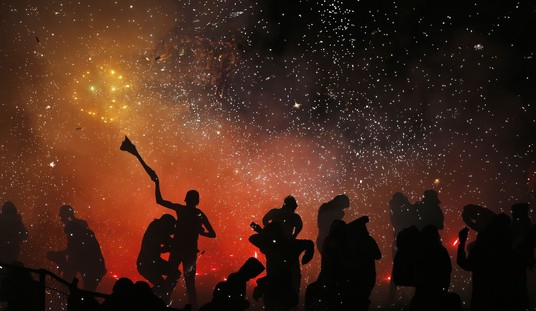I still remember discovering as a kid that my family celebrated Halloween differently than my friends’ families.
Upon moving to Fairfax, Virginia, my third grade year, my parents enrolled me in a non-denominational Christian school whose founders might have established it solely to shame second-grade brutes who matriculated from Quantico’s public school system. Missing class the first week due to a weird virus didn’t help my transition. When I arrived, my teacher pointed out that because I had not yet learned how to write cursive (unlike my classmates listening to this conversation), she had written Michael H. on a board and taped it onto one-third of my desk space.
(The only other idiot who printed was a transfer named Daniel S. We frequently greeted each other on our way to the podium at the front of the room, to “write minus three” by our names in the Uprightness ledger, for crimes neither of us knew we had committed. We never became friends, though. And I never learned his last name. Perhaps our teacher should have written it.)
Humiliation mounted as summer turned to fall, when Daniel S. brought up Halloween after morning devotions. He was looking forward to trick-or-treating and dressing up as something–probably an oaf.
Hands shot into the air. I thought, “This is nice. We’ll share what we’re dressing up as, and people won’t hate Daniel S. today.” Instead, my teacher nodded to a 14-pound blonde girl named Rachel, whose parents had been missionaries to Russia, and whom I regarded as smarter than God. Rachel said that every Halloween, her family ordered pizza, watched a movie, and turned off all the front porch lights, to dissuade beggars.
I wanted to walk over and print “THAT’S CRAZY” onto her desk. What was wrong with her mother? Would it be too socialistic to stick a bowl outside with a dollar-bag of Dum Dums and a note asking children to “take one, please”?
Instead I looked around and saw almost everyone nodding. Three underweight triplets, who shared a “desk quad” with Rachel, and whose collective intelligence terrified me, appeared to swoon.
“The trouble is the goblins,” my mother later explained. Because my folks approved of my sisters and me dressing up and begging, I had not realized that, like Rachel’s parents, mine also drew some boundaries around Halloween. Those excluded goblins, witches, wizards, werewolves, vampires, skeletons, ghosts, and zombies. Never did a gauze spider web darken our door, nor our latticework, nor our mailbox. We carved pumpkins every year, but they always smiled.
Twelve years later I married a former shunner of Halloween (though not one of the triplets). She has mellowed, and I have wised up. We approach October 31 the same way my parents did–except we do it year-round.
A critical question that accompanies much of what our kids watch, read, see, and hear–and how they dress up on Halloween–is, “Does this belong to a culture of life, or a culture of death?”
Our reason for asking this question is simply that our family belongs to the former. In many ways our society celebrates that which “is passing away”–things like materialism, lust, and fame. These are hopeless substitutes for people who have hitched their life’s meaning to its own star, which, like every human’s, is fast falling to the grave.
Biblical Christians regard “the grave” not as the next step, but as a step backward–the just reward for sinful creatures (which my wife and I definitely are). As Christ-followers our family celebrates the new life God has given us. On Halloween our culture asks, “Isn’t this dead, hopeless, rotting, trapped, terrified, terrifying figure funny?” Our family instead celebrates life by asking, with the Apostle Paul, “O death, where is your victory? O death, where is your sting?”
We don’t assume that every 11-year-old with a “Scream” mask consciously celebrates the culture of death. More likely, he has no idea what narrative he is wrapped up in. Dark though the grave is, it serves as a setting for some of the world’s greatest stories, from biblical truth to Medieval epics to the canon of Greek and Roman mythology, which we delightedly teach our children. The walking dead figure prominently in more recent classics we will read with our kids–“The Chronicles of Narnia,” “The Lord of the Rings,” and even “Harry Potter.”
Over each narrative looms our question: culture of life, or culture of death?
Our kids pick up on these distinctions: “Dad, there was a skeleton on the Magic School Bus today, but it was for science.” Science is good. So is history. Soon our kids will associate October 31 with religious-historical markers, such as All Hallows’ Eve, and the start of the Protestant Reformation.
Meanwhile, we will happily dress them up (usually as heroes), take them begging on Halloween–and talk with them. So leave your light on.









Join the conversation as a VIP Member